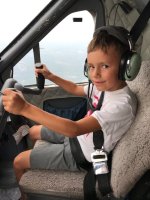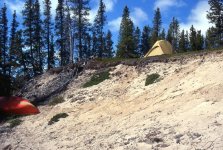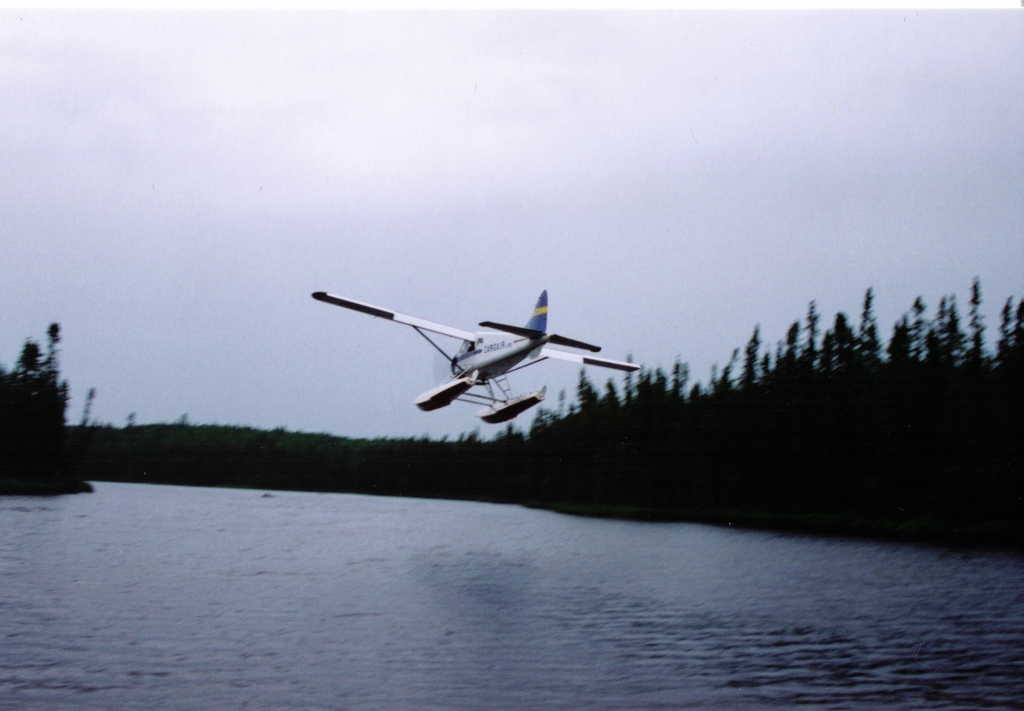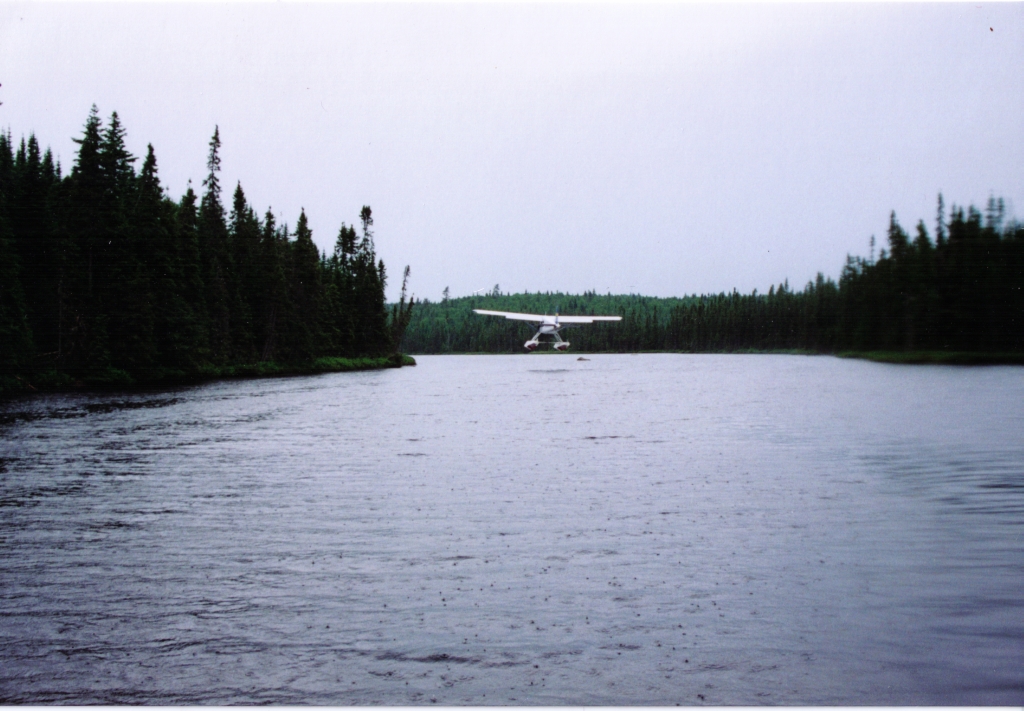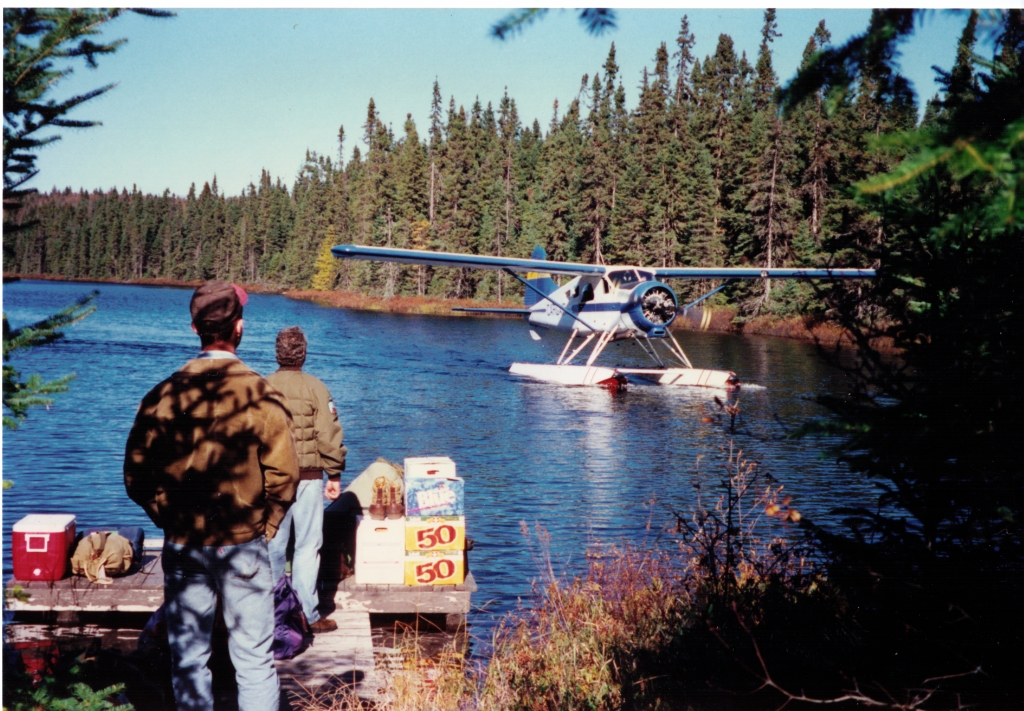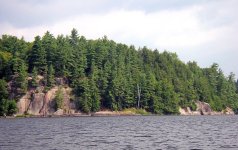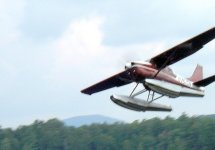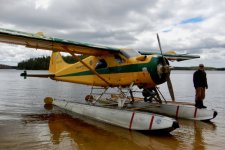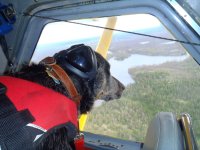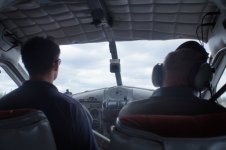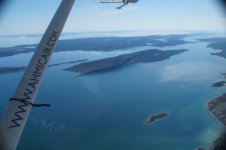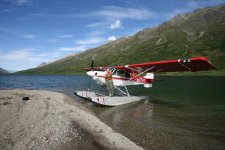Here's your chance to tell any stories or experiences you've had with float planes—good, bad, frustrating, annoying, dangerous, rescuing, life-saving, boring, too early, too late . . . whatever.
I've never been a Canadian wilderness tripper, so I have no float plane experiences with that. However, for several years in the 1980's I used to lead whitewater trips on the Rapid River in Maine, which drops fairly precipitously from Middle Dam on Lower Richardson Lake to Umbagog Lake. The most convenient way to get to the Richardson put-in was to take a float plane from Umbagog.
Two small memories.
One year, the retired Eastern Airlines pilot wasn't allowed to takeoff or land on big Umbagog Lake due to construction at the park. So he had to use a nearby pond, ensconced between mountains. On the trip back to the pond, he said he said, "I can't use a gradual landing path into this small pond, so if I really want to be a bush pilot, I'm going to have to use the high-G death dive I learned in flight school 35 years ago." (Or some scary term like that.) So he went sharply upwards over the mountain rim, then zoomed almost straight down, and then abruptly leveled out to land a few yards from shore. I don't like flying at all, much less in small aircraft, and just about fainted from fear.
Another time, when picking us up at the base of the Rapid River, his float plane got blown into too-shallow water as he waited for all the paddlers to show up. Meanwhile, I was practicing open boat rolls in my Whitesell Piranha canoe. The pilot called out that he needed to be towed out of the shallows. One of our kayakers in a Perception Dancer, Tom Radcliffe, hooked his tow line onto the plane's struts, and all by himself towed the plane about 100 yards. I can still picture vividly in my mind Tom doing that tow and recall regretting that I didn't have a camera, for I didn't think it was possible.

I've never been a Canadian wilderness tripper, so I have no float plane experiences with that. However, for several years in the 1980's I used to lead whitewater trips on the Rapid River in Maine, which drops fairly precipitously from Middle Dam on Lower Richardson Lake to Umbagog Lake. The most convenient way to get to the Richardson put-in was to take a float plane from Umbagog.
Two small memories.
One year, the retired Eastern Airlines pilot wasn't allowed to takeoff or land on big Umbagog Lake due to construction at the park. So he had to use a nearby pond, ensconced between mountains. On the trip back to the pond, he said he said, "I can't use a gradual landing path into this small pond, so if I really want to be a bush pilot, I'm going to have to use the high-G death dive I learned in flight school 35 years ago." (Or some scary term like that.) So he went sharply upwards over the mountain rim, then zoomed almost straight down, and then abruptly leveled out to land a few yards from shore. I don't like flying at all, much less in small aircraft, and just about fainted from fear.
Another time, when picking us up at the base of the Rapid River, his float plane got blown into too-shallow water as he waited for all the paddlers to show up. Meanwhile, I was practicing open boat rolls in my Whitesell Piranha canoe. The pilot called out that he needed to be towed out of the shallows. One of our kayakers in a Perception Dancer, Tom Radcliffe, hooked his tow line onto the plane's struts, and all by himself towed the plane about 100 yards. I can still picture vividly in my mind Tom doing that tow and recall regretting that I didn't have a camera, for I didn't think it was possible.


